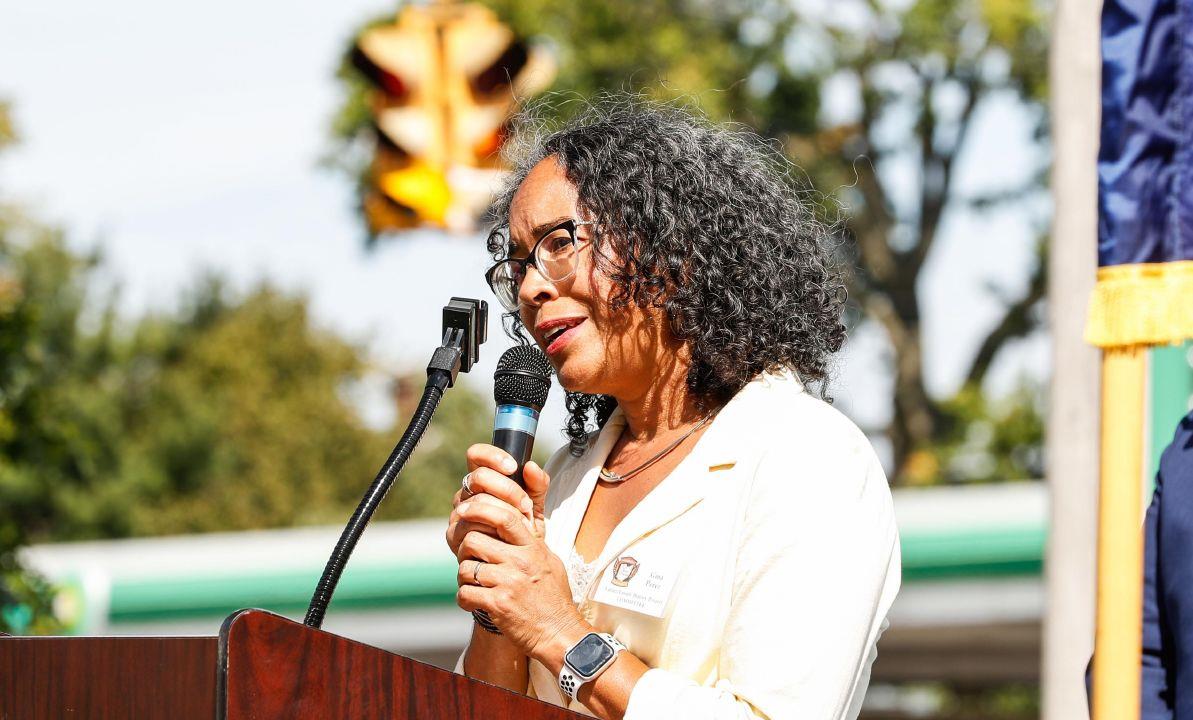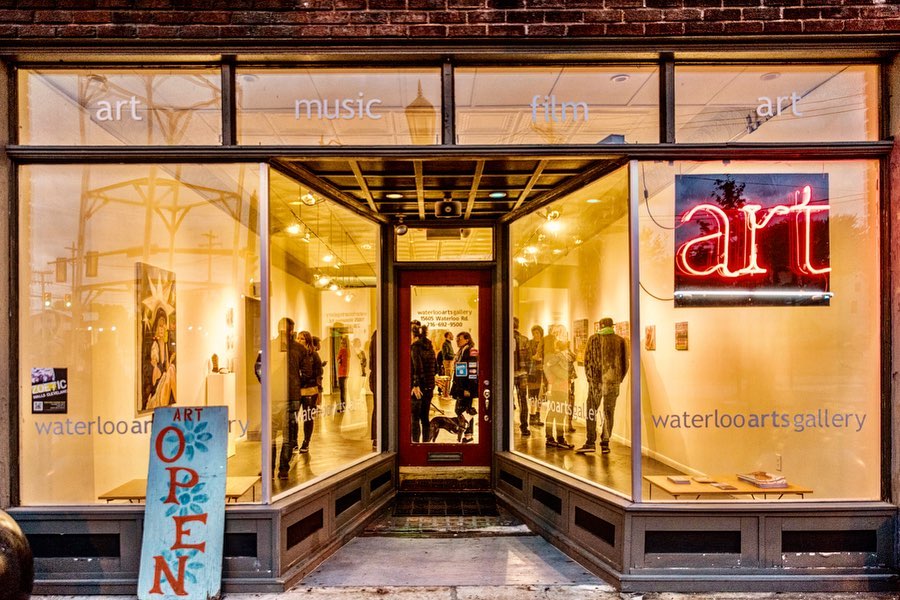The Latino Lorain Veterans Story Walk, an exhibit designed to give voice to Latino veterans and shed light on their military experiences, was opened Sept. 16 in Oakwood Park. The Story Walk is the result of a collaboration between various organizations and public officials that together form the Latino Lorain History Project, primarily El Centro de Servicios Sociales, the Lorain Historical Society, and Oberlin College.
“We’ve collected over 20 oral histories of Latino veterans or their family members,” Executive Director of Lorain Historical Society Barb Piscopo said. “We really tried to make the Story Walk encompass a wider homage to veterans, … to make their experience better known, better understood — and especially to honor the Latino veterans.”
The exhibit is spread across 10 panels in Oakwood Park that travel from the site of a preexisting monument to Hispanic veterans, which consists of a headstone and plot of land on the corner of E. 31st Street and Clinton Avenue, to State Route 57, where the expanded Ohio Hispanic Veterans Memorial is currently in development.
Piscopo explains that the route charted by the Story Walk was influenced by communities of color in Lorain, whose mobility has historically been restricted by real estate redlining practices.
“Our Story Walk spanned that distance from Route 57 to 31st and Clinton,” Piscopo said. “It’s to connect the two memorials. Back in the day, people of color were not allowed on [SR] 57, as part of an informal redlining. They stopped at Clinton Avenue. So that’s why [the original] monument is at that location further west in the park. But today life has changed, and people of color are allowed everywhere in Lorain. … That’s why the new monument is going to be on Route 57.”
Former Lorain Chief of Police Celestino Rivera dedicated himself, after his retirement, to laying the groundwork for a memorial to commemorate Hispanic veterans from Lorain, which is home to the largest Hispanic community per capita in the state of Ohio. After Rivera’s death in 2022, Executive Director of El Centro Victor Leandry took up the reins of the Ohio Hispanic Veterans Memorial Project Committee founded by Rivera, which provided the impetus for the Story Walk.
“That was the reason — since there was this big push to create the Ohio Hispanic Veterans Memorial, [we wanted to] do an interim local piece honoring veterans,” Piscopo said.
Students enrolled in Latinx Oral Histories, a course offered by Professor and Chair of Comparative American Studies Gina Pérez, contributed to the Story Walk by collecting oral histories from Latino veterans in Lorain.
“We have been using the skills that students gain in the Latino Oral History Project to help create an archive of Latino oral histories and to have more focused projects that are a reflection of what El Centro and Lorain Historical Society and community members want,” Pérez said.
The first exhibit created through the collective efforts of the Lorain Latino History Project, “Celebrating 100 Years of Latino History in Lorain, Ohio,” was unveiled on the centennial of the arrival of workers from Mexico and later Puerto Rico in Lorain, who were recruited to work in Lorain’s steel mill. The exhibit won a statewide award in 2022 for highlighting the history of South Lorain’s Vine Avenue community.
When Pérez’s Latinx Oral Histories class went hybrid over the COVID-19 pandemic, staff at Lorain Latino History Project partner organizations including El Centro and the Lorain Historical Society, as well as unaffiliated community members, were invited to participate in classes and trainings on collecting oral histories.
“I went to the training, and it was very clear for all staff — for us to start documenting oral history was going to be the best way to start documenting the history of the Latino community and capturing everything,” Leandry said. “We kept meeting through the pandemic, and the energy was amazing.”
Students in Pérez’s Latinx Oral Histories class examined the history of Latino communities in Northeast Ohio, the ethics of research, and Latino oral history as a field of study, all to equip themselves for the difficult task of asking interview subjects to share some of their most vulnerable memories.
“It’s very emotional,” Pérez said. “Veterans who have been in combat, especially those who were drafted and who served in the Vietnam War, had a lot of feelings that came out. And I think it was also a challenge for students, who are hearing these stories for the first time, and sometimes have very complicated relationships and ideas and opinions about the U.S. Military. … Those were things that we identified as important to address.”
However, the process of co-creating an oral history was a valuable experience not just for the student-historians, but for veterans themselves.
“Once we got over that fear of possibly touching on a delicate topic, … we realized how important this was for the veterans to tell their story,” Piscopo said. “If you were in college, you could escape the [Vietnam War] draft. Well, many of these young Latino men weren’t in college, so they had to go in and serve. And they put themselves on the line just like everybody else did. But when they came back, because the war was so unpopular, we did not welcome them. And so for them, telling their story was very, very cathartic.”








